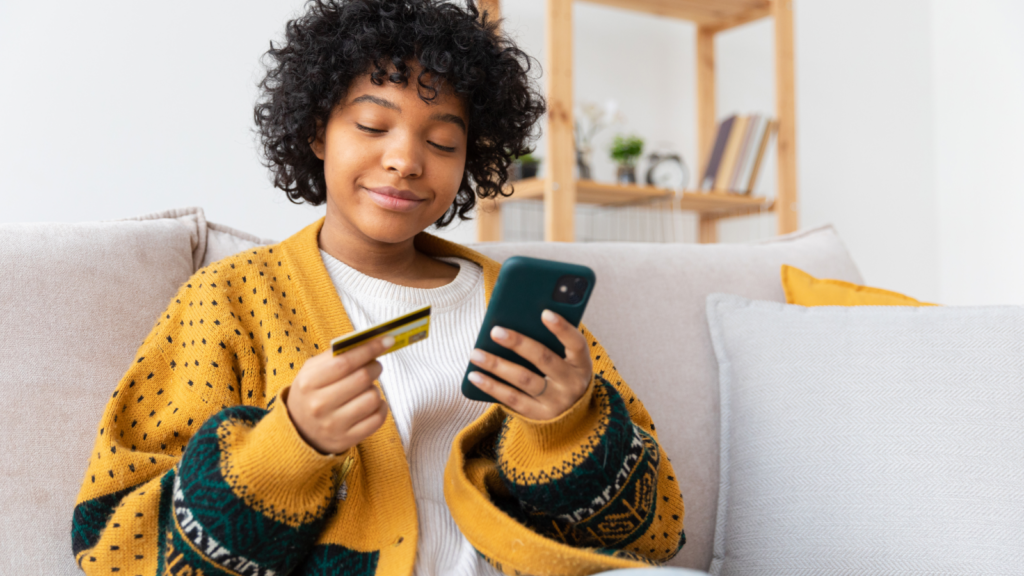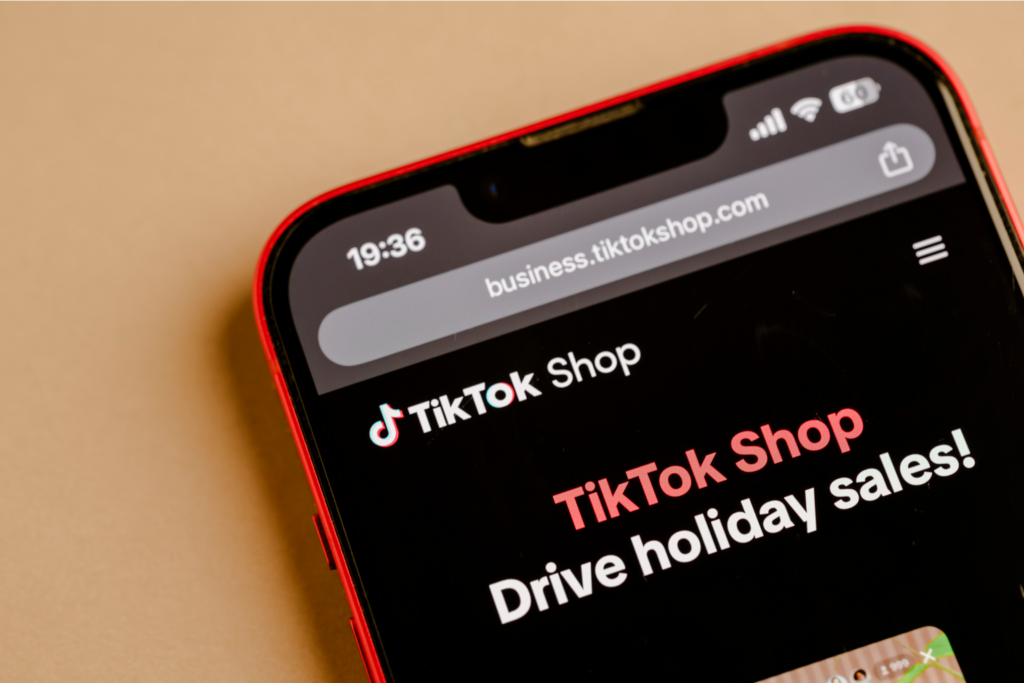Printify + your favorite platform = more sales!
With millions of sellers and products, Amazon is a competitive marketplace, and personalization is one of the key ways to distinguish your brand in eCommerce. Let’s explore why creating tailored shopping experiences helps make more money on Amazon.
We’ll highlight why personalization is perfect for standing out on Amazon, and how Printify and other personalization tools can help through the print-on-demand model.
This post may contain affiliate links, which means we may earn a commission if you make a purchase through those links. This comes at no additional cost to you.
Why does personalization matter on Amazon?

Product personalization lets customers make items their own. For example, shoppers could add a name, title, date, photo, custom design, or favorite color, turning standard products into something new, fresh, and special.
Modern shoppers expect personalized experiences
Shoppers are more likely to choose a product they can customize rather than one that’s mass-produced and sold by dozens of other vendors. 71% of customers expect personalization, knowing that it adds more value to their purchase and makes it more tailored to their needs.
Occasions like holidays, birthdays, weddings, anniversaries, graduations, and baby showers often drive customers to seek personalized gifts. These events are opportunities to create custom designs that resonate with specific moments, such as monogrammed items for weddings or holiday-themed keepsakes like custom ornaments or personalized stockings.
It’s not just Amazon. As more big brands look to personalize their marketing efforts for single users, others take it a step further with intuitive product customization tools on their websites.
This sense of ownership fosters loyalty, meaning customers are more likely to return for future purchases or recommend your store to others. But that’s not all that personalization affects.
Personalization encourages repeat customers
By offering personalized products, sellers create a more engaging shopping experience and build stronger emotional connections with their customers. 56% of shoppers in 2023 stated that they would be motivated to make repeat purchases from retailers that offer online personalization.
Personalization increases customer loyalty through:
- Memorable experiences. Customers who receive products customized just for them will likely remember the purchase positively, raising the chance of repeat purchases.
- Increased value perception. Personalized items are seen as more valuable due to the unique customization effort, which can help lower return rates.
- Emotional connection. Customers feel more emotionally connected to personalized products, whether it’s a t-shirt with their child’s name or a mug with their favorite quote.
Personalization goes hand-in-hand with Amazon’s algorithm
Amazon’s algorithm decides how products are ranked and recommended to shoppers. It continuously analyzes browsing patterns, purchase history, and customer feedback to deliver tailored product suggestions.
Personalization can enhance your products’ performance in Amazon search. Customizable items often see higher engagement, with more clicks, purchases, and positive reviews, which raise visibility if you market your listings well.
Another aspect to consider is the potential for personalized product recommendations.
You can track this information through Amazon Seller Central metrics like click-through and conversion rates, as well as Brand Analytics, to refine your listings and optimize engagement.
Personalization drives upselling opportunities
Personalized products also offer the opportunity for upselling. For example, once a customer personalizes a t-shirt, they might be interested in adding matching accessories, such as a hat.
Personalized products significantly enhance perceived value, making customers more willing to invest in additional items. When shoppers customize a product, it becomes uniquely theirs, increasing emotional attachment and perceived worth.
By highlighting complementary products during checkout or in follow-up emails, you can gently encourage customers to build a cohesive, personalized collection. This strategy not only increases sales but also creates a tailored experience that aligns with customer styles or gifting needs.
What types of personalization can you offer to increase customer engagement?

Here are some popular customization options you can use with the Product Creator tool to increase engagement:
- Text personalization. Let customers add names, dates, or special messages to products to make them unique.
- Custom artwork. Allow shoppers to upload their own logos, photos, or designs, creating a truly one-of-a-kind item.
- Color customization. Offer different color schemes for your products, letting buyers choose their preferred color combinations.
- Design choices. Provide multiple design options for a single product, such as different patterns, fonts, or themes.
- Pre-made design templates. Create customizable templates where customers can choose from different designs.
How can you use data to personalize your product offerings on Amazon?

Amazon’s extensive data collection and analysis capabilities provide sellers with powerful tools to better understand customers and refine product offerings.
For Printify merchants, personalization isn’t just about the product itself but also how it’s presented to potential buyers. Using tools like Amazon Brand Analytics and customer feedback, you can gain deep insights into shopper preferences, behavior, and trends.
Key tools for data-driven personalization include:
Amazon Brand Analytics
Brand Analytics helps sellers analyze important data, such as which search terms lead customers to your products, which products perform best, and what categories are trending.Use this data to refine product listings, finding the most effective keywords to reach target audiences interested in your product offers or niche.

Customer feedback and reviews
By monitoring reviews, you can identify common requests for personalization features, such as size adjustments, color preferences, or product quality. This direct input can guide you in tailoring your products and services more effectively to meet audience desires.
AI Shopping Guides
Through AI Shopping Guides, Amazon provides shoppers with highly relevant product recommendations based on their browsing and purchase histories.
With over 100 product types supported, these AI-driven tools give customers a curated shopping experience. By tapping into data from AI-generated insights, you can fine-tune your offerings to better align with customer expectations and preferences.
What tools can you use to manage personalization on Amazon effectively?
With Printify, you can tap into several tools to effectively manage and enhance product personalization on Amazon, increasing engagement and improving the customer experience.
Amazon A+ Content
This tool lets you create enhanced product descriptions with high-quality images, videos, and comparison charts, giving potential buyers a deeper understanding of your customizable products. A+ Content helps you tell your brand story, highlight the value of personalized products, and increase conversion rates by offering customers more information.
Amazon Custom
Amazon Custom is a feature designed for sellers offering customizable products. With this marketplace tool, you can enable listing customization directly on Amazon, letting customers personalize items using three set parameters: text, images, and product configurations.
External personalization software
While Amazon’s native tools provide strong options, external software like Printify’s Product Creator can enhance personalization even further. Printify’s tools help easily create and preview personalized items, offering customers tailored options like font selection, color choice, and design placement.You can also enhance your capabilities by using the Hello Custom Tool, which integrates with Amazon and Printify to offer a broader range of features: integration with Printify and Amazon, automated order management for personalized products, and more useful design tools.
Can personalized print-on-demand products improve your Amazon SEO?

Yes, personalized print-on-demand products can significantly amp up your Amazon SEO and enhance visibility in search results. Personalization adds a unique element to your product listings, making them stand out among competitors and giving them an edge with highly relevant keywords.
Here’s how personalization enhances SEO:
- Targeting long-tail keywords. Products like custom t-shirts or personalized mugs let you use long-tail keywords that match what buyers are searching for. These keywords – such as “custom t-shirts with name” or “personalized mugs for weddings” – have less competition but stronger buyer intent.
- Niche market appeal. By optimizing listings with niche-specific keywords like “custom logo t-shirts” or “monogrammed coffee mugs,” you can capture more precise customer queries. These niche products have a higher chance of ranking due to targeted appeal.
- Amazon’s algorithm loves engagement. Amazon’s search ranking algorithm considers customer engagement metrics like clicks, conversions, and reviews. Products that are personalized tend to see higher engagement rates, which helps improve rankings.
- Detailed product descriptions: Personalization lets you add more details to your product titles and descriptions, highlighting customizable options (e.g., color, design, text). This adds keyword richness and makes your listings more relevant.
Take advantage of personalization and optimize your listings with unique keywords. Learn more from Printify’s Amazon SEO guide for effective strategies to improve visibility.
The impact of personalization on SEO:
- Higher ranking potential with specific, customized keywords.
- Increased conversions by matching exactly what buyers want.
- More traffic thanks to targeted search terms that bring in the right audience.
Conclusion
Personalization is your key to cutting through the noise and grabbing customer attention. By creating custom products, optimizing your listings with targeted keywords, and using tools to shape your strategy, you’re not just another seller – you’re informed and ready to track data.

Now’s your chance to stand out. Sign up with Printify to start designing personalized products, reach more customers, and build a brand that keeps people coming back for more.












